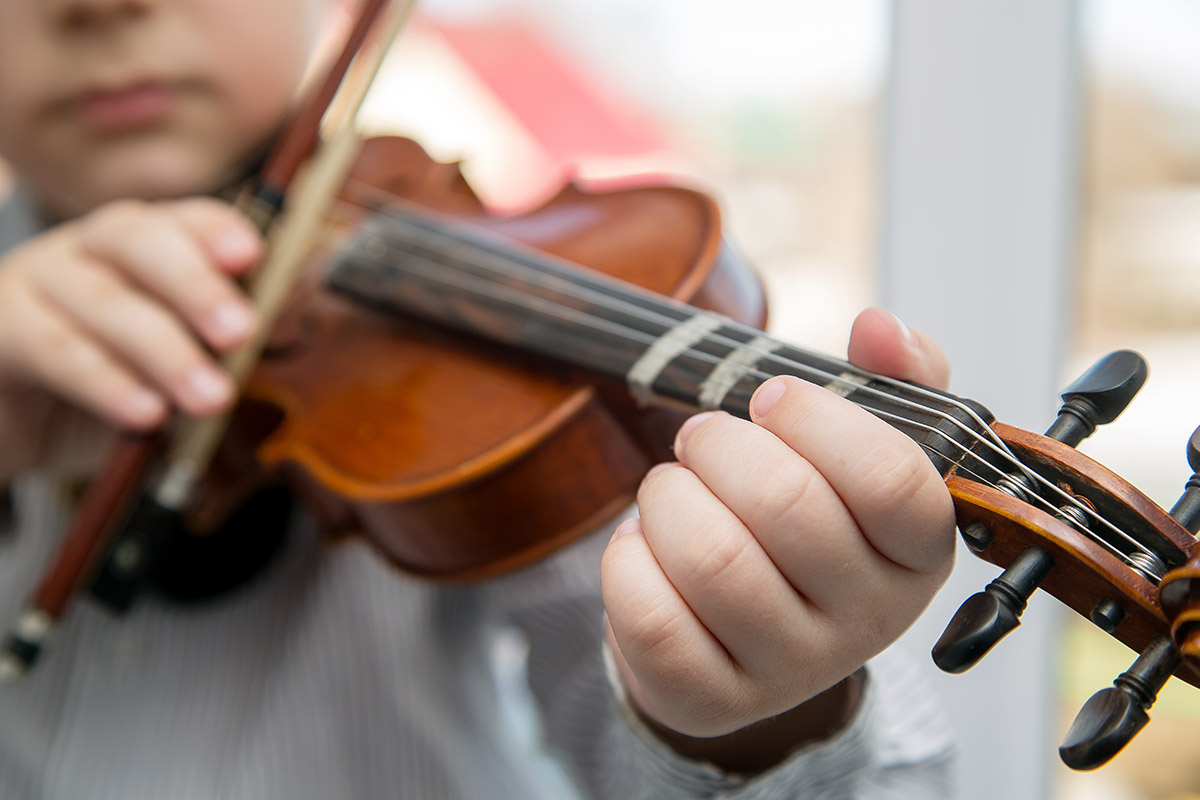
Choosing an instrument can seem like an impossible task. Would it be better if your child selects a more popular instrument such as guitar or piano, or an instrument such as the viola or bass, that fewer musicians are proficient at playing? Don’t let size or popularity limit your opportunities. All instruments come in various sizes. That means any student can play any instrument, no matter how little or tall they are!
Whether this is your child’s first instrument, second, or even third, consider joining the String Family.
What is the String Family?
In an orchestra, the string family is the largest family of instruments. This group comes in four sizes: violin (smallest), viola, cello, and the double bass (largest). All string instruments are similarly shaped and have:
• A curvy, hollow, wooden body where sound vibrates.
• Wooden necks.
• Strings, generally made of nylon or steel, that stretch over the body and neck, and attach to small decorative heads.
While some musicians may pluck these strings with their fingers, a sound is most often produced by drawing a bow across the strings. Bows have a wooden handle and horsehair strings.
Violin
The violin is the smallest and highest-pitched of the string instruments. To play it, rest your violin between your chin and left shoulder, holding the neck with your left hand. Using your left hand, press down on the strings to change pitch. Your right hand operates the bow or plucks strings.
Viola
The viola is slightly larger than a violin (just over 2 feet) and produces a higher sound that is often referred to as “richer” or “warmer”. While the strings are thicker on a viola, it is played the same way: with your instrument resting between your chin and left shoulder.
Cello
The cello looks very similar to a violin but is much larger in size, usually around 4 feet in length. It has even thicker strings than the viola, allowing it to produce a range of notes from low to high. Unlike the violin or viola, the cello is too large to be held in your arms alone. A small metal peg at the base of the body allows you to rest the cello on the ground, balancing it between your knees with the neck resting against your left shoulder. However, you still use your left hand to hold the neck and press down on the strings as you draw your bow using your right hand.
Double Bass
The Double Bass, also known as the Contrabass, is referred to as the “grandfather” of the string family and produces the lowest notes. It is over six feet in length and is played like the cello. Because of its size, the musician must stand while playing, rather than sit.
Start your child on the path towards a musical education. Performing Arts specializes in vocal, guitar, piano, percussion, strings, brass, musiking lessons and WAY more. Our instructors are the best around. We offer exclusive 1-on-1 lessons with our qualified instructors who will create a structured & individualized age-appropriate curriculum just for you!. Contact Performing Arts to learn more about lessons for your child.


